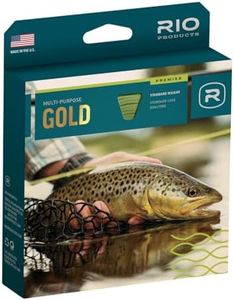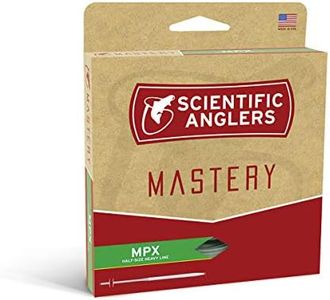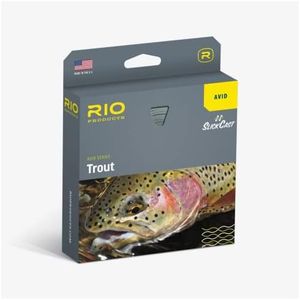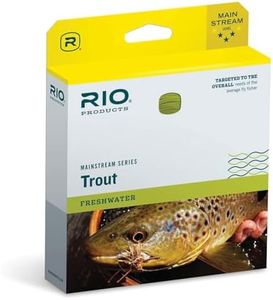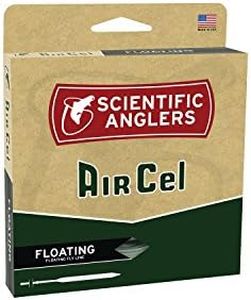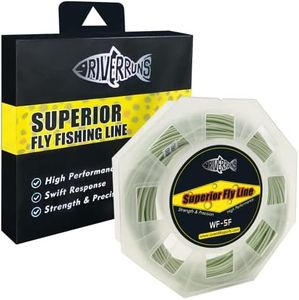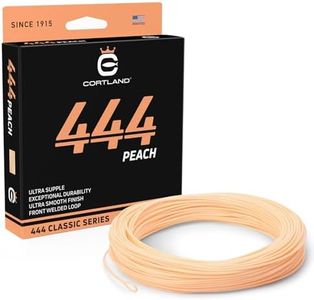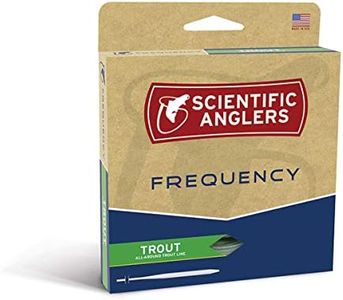We Use CookiesWe use cookies to enhance the security, performance,
functionality and for analytical and promotional activities. By continuing to browse this site you
are agreeing to our privacy policy
10 Best Floating Fly Line
From leading brands and best sellers available on the web.Buying Guide for the Best Floating Fly Line
Choosing the right floating fly line is essential for a rewarding fly fishing experience. The fly line acts as the connection between you, your rod, and the fly, helping you to cast with accuracy and present your fly to fish on or near the water’s surface. Different water conditions, fly sizes, and fishing techniques call for specific types of floating fly lines, so understanding the main features will guide you towards the best fit for your style and needs. Keep your target species, local waters, and casting habits in mind as you consider your options.WeightWeight refers to how heavy the fly line is, and it matches to the weight rating of your fly rod. The right weight ensures smooth casting and efficient energy transfer. Lower weights (like 2-4) are better for small streams, delicate presentations, and smaller fish, while mid-weights (5-7) cover most freshwater fishing, including trout and bass. Higher weights (8 and above) are best for heavier flies and larger fish such as salmon or pike. Match the line weight to your rod and the fish you’re targeting for the best results.
TaperTaper describes how the thickness of the fly line changes from end to end. The most common types are weight forward, double taper, and level. Weight forward tapers are thickest near the front and good for longer casts and windy conditions. Double taper lines are symmetrical and ideal for gentle, controlled presentations on smaller waters. Level lines have no taper and are less common nowadays. Your choice should depend on where you usually fish, how you like to cast, and what kind of flies you use.
Core TypeThe core is the inside material of the fly line, affecting its stiffness and stretch. A braided core usually offers more flexibility and works well in moderate climates. A monofilament core is stiffer, reducing stretch, which is good for hot weather or setting the hook at long distances. If you fish in colder climates, choose a supple core for less memory and easy handling. For tropical waters, a stiffer core prevents tangling.
Floating CoatingThe coating determines how well the line floats and sheds water. Most floating fly lines have a plastic or polymer coating filled with microbubbles to stay buoyant. Look for lines specifically labeled as floating if you want your fly to stay on or near the surface. If you’re after species that take surface flies or dry flies, a high-quality floating line ensures better drifts and easier pickups for recasting.
ColorLine color impacts visibility for both the angler and the fish. Brighter colors are easy for you to track in high glare or low light, helpful for teaching and mending your line. Subdued or natural colors are less likely to spook wary fish in clear, calm waters. Choose a color you can see, but consider the fishing environment and how cautious the fish might be.
LengthFly lines typically come in lengths around 90 feet, which is suitable for most fishing situations. If you need to make extra-long casts or fish in larger waters, some lines come in longer versions. For most anglers, the standard length covers most fishing needs.
